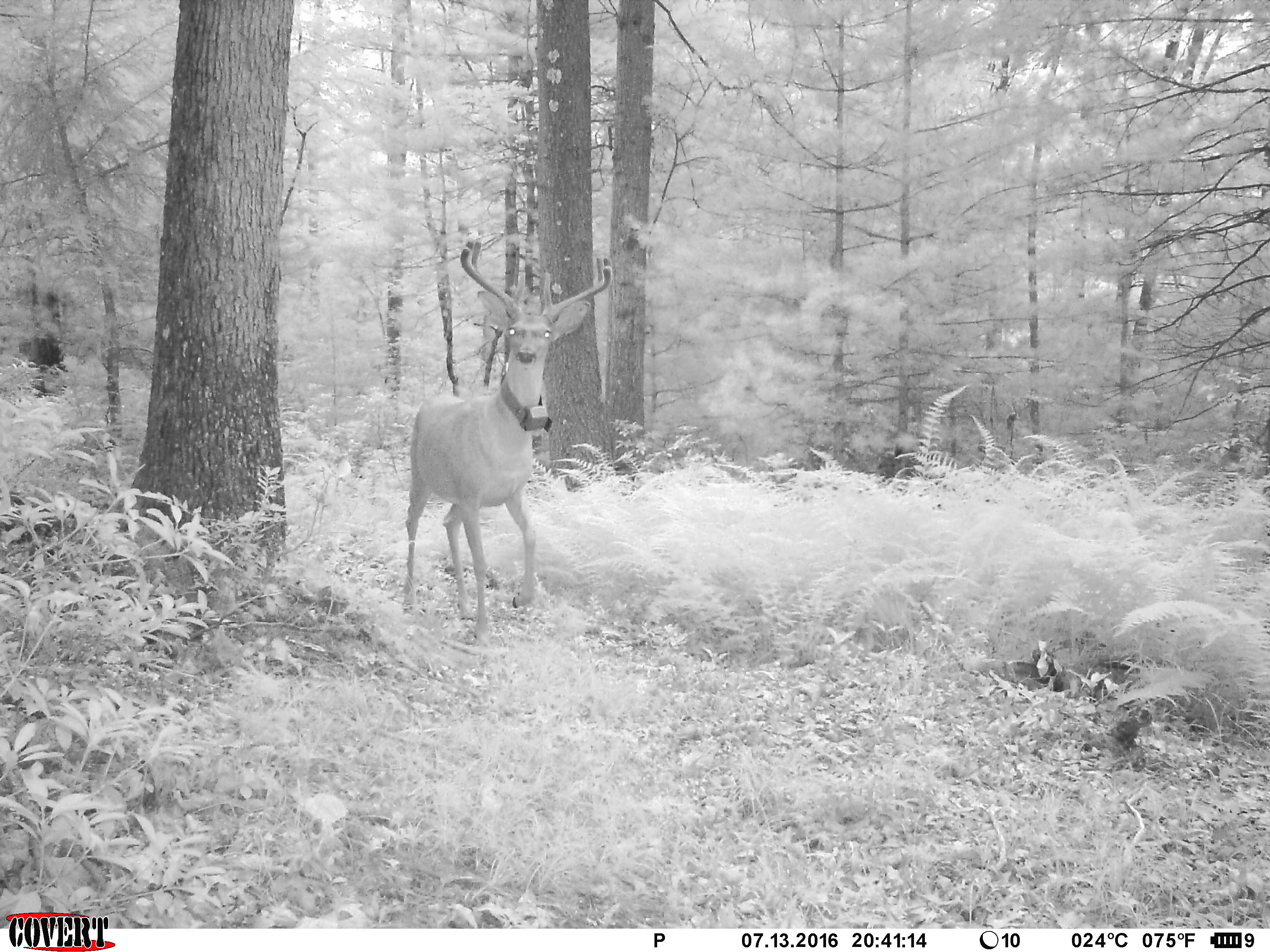Recently a reader shared with us a video of one of our radio-collared bucks that is at least 6.5 years old.
Wouldn’t you love to set up a bunch of cameras to try and map out his home range? How would you do that? Is there anything we have learned with the Deer-Forest Study that might save you some time? That is, without quitting your day job, are there ways to narrow down where to look for that big buck?
Let’s check out some deer we’ve collared over the years and see if there are landscape features that influence where deer go (and don’t go).
We know roads affect deer movements. Our research in PA has shown that when deer disperse, they head away from roads and tend to stop before crossing a road. So we know roads can serve as home range boundaries. Here’s a buck home range July-September:
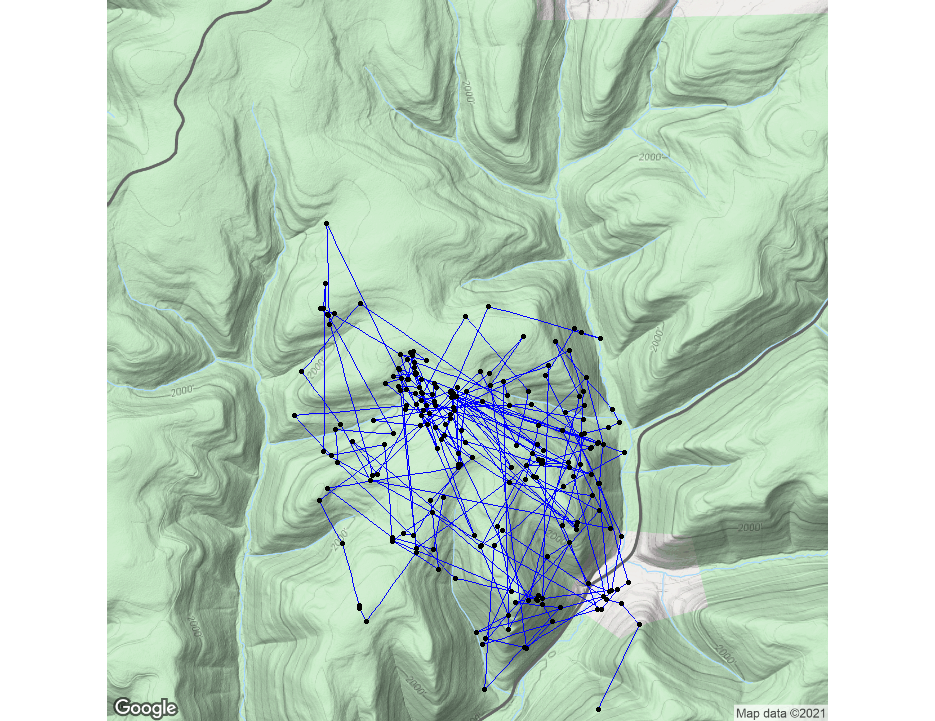
Streams can serve as boundaries as well. Below is an example of a female that didn’t like to get her feet wet.
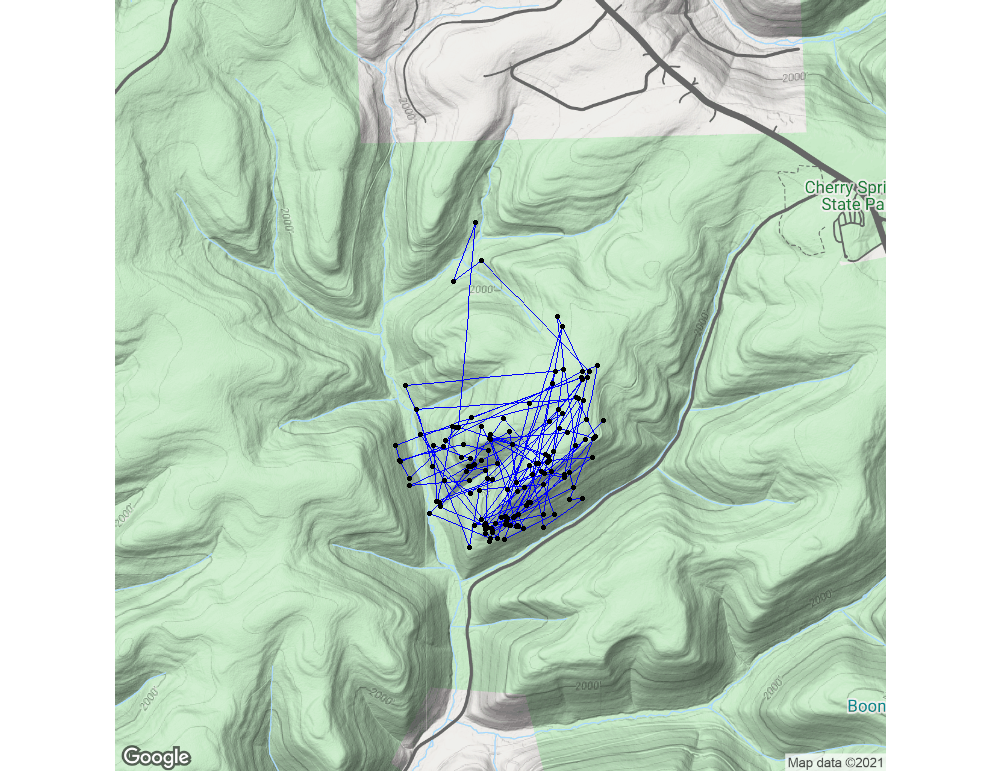
My favorite deer, Hillside Doe, had a pipeline serve as a distinct boundary.
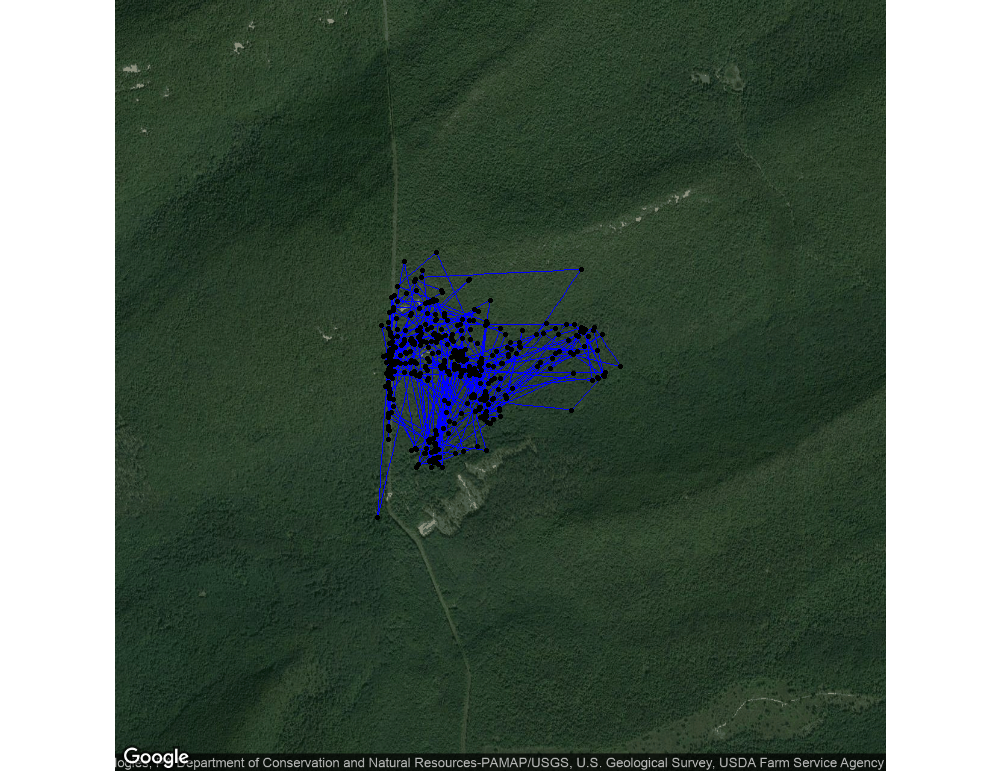
So here is something to consider – if you have a camera along a stream or near a road, odds are that you caught this deer on camera along the edge of his/her home range. A few strategically placed cameras could give you some insight into which side of the road is more likely the core of their home range.
But are there exceptions to these rules? Always!
Remember Hillside Doe and how the pipeline served as a hard boundary? Check out this buck, the pipeline is smack dab in the middle of his home range!
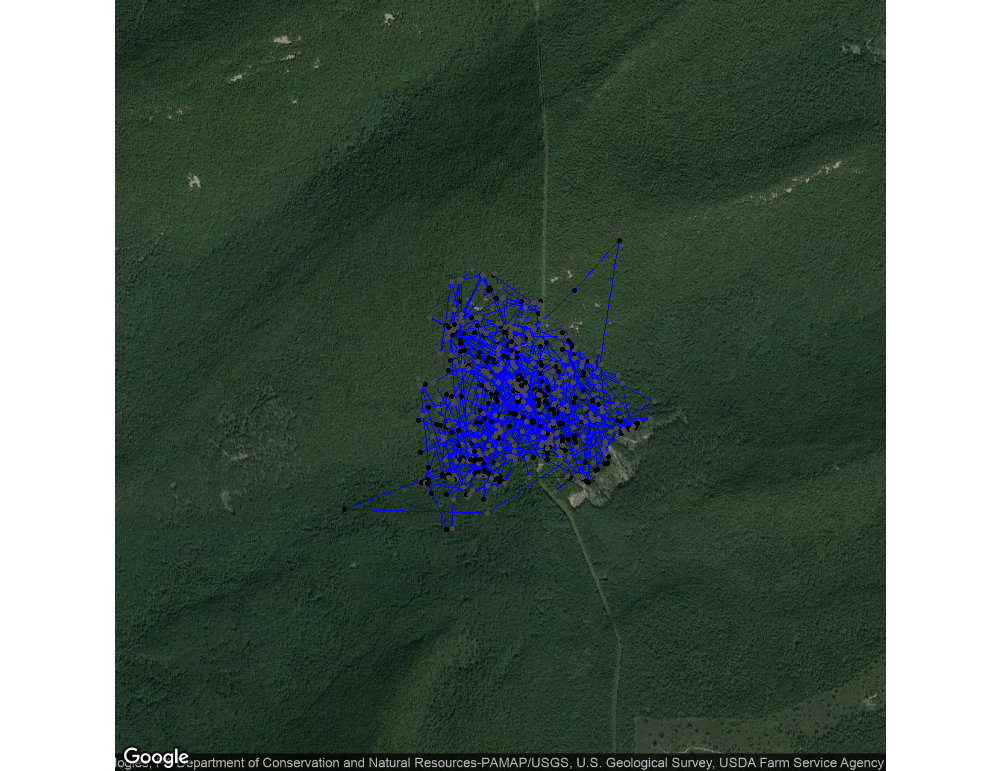
Even in the Ridge and Valley Region where many deer simply go up and over ridges in their daily travels, roads appear to influence their movements. Here is the July-September home range for Male 8909:
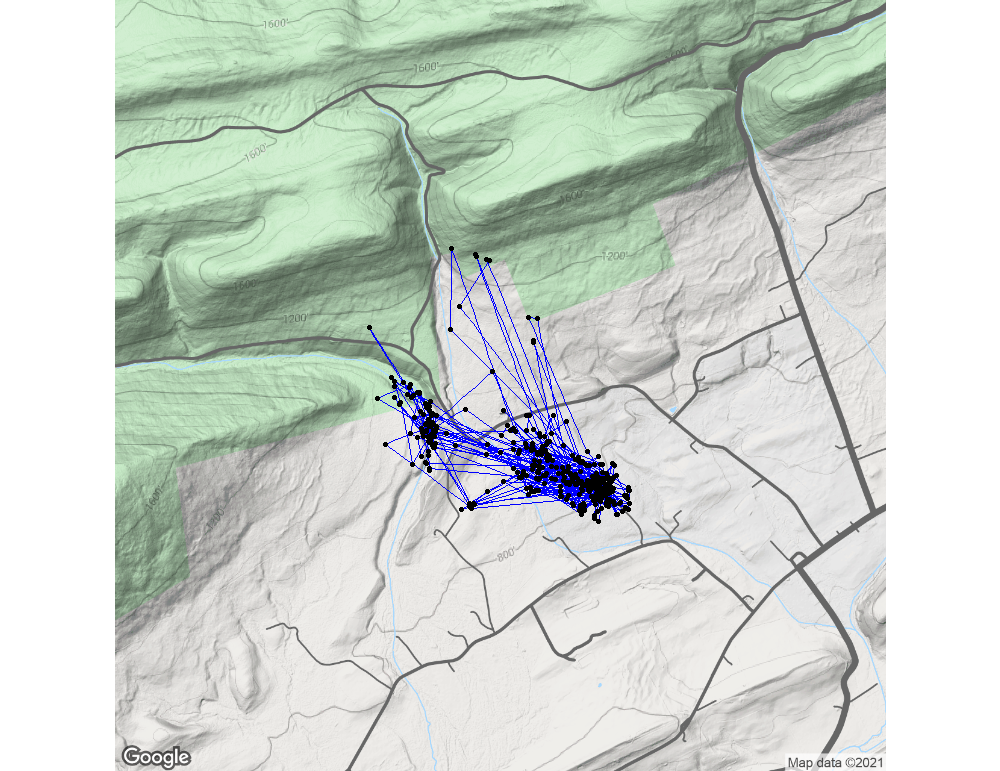
And a female:
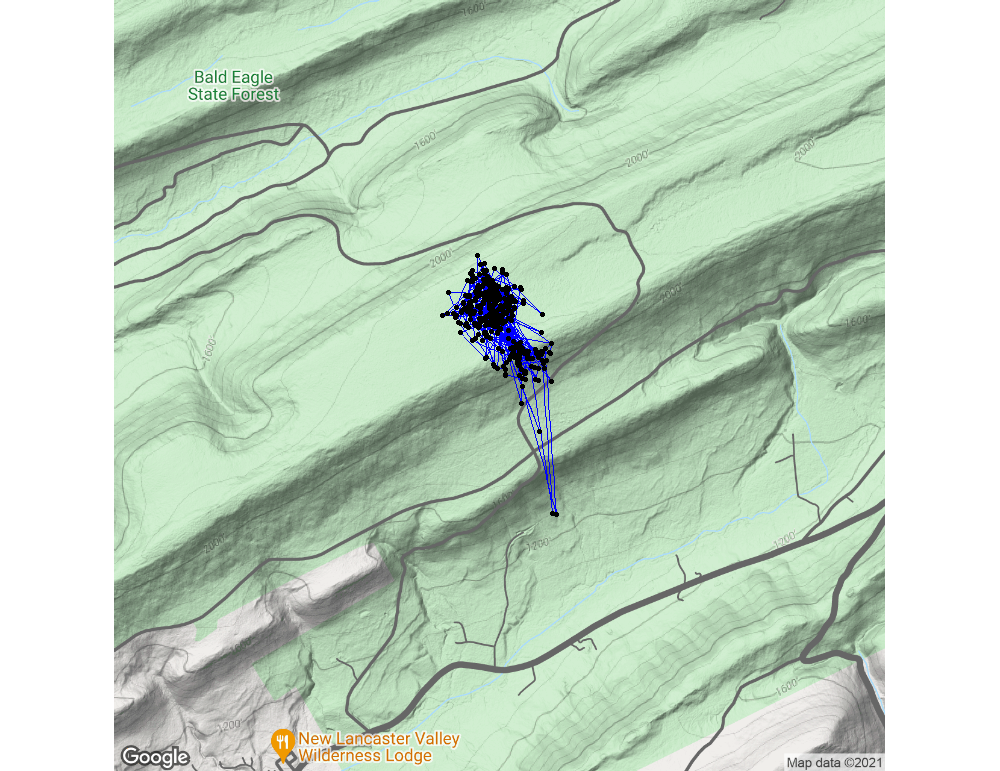
So gathering intel on that deer in July, August, and September is going to provide some insights into whether his core home range is to the north or south of that east-west road. But all bets are off during the rut!
Male 8909 (above) seemed constrained by roads, but during October and November you could find him anywhere over a much larger area:
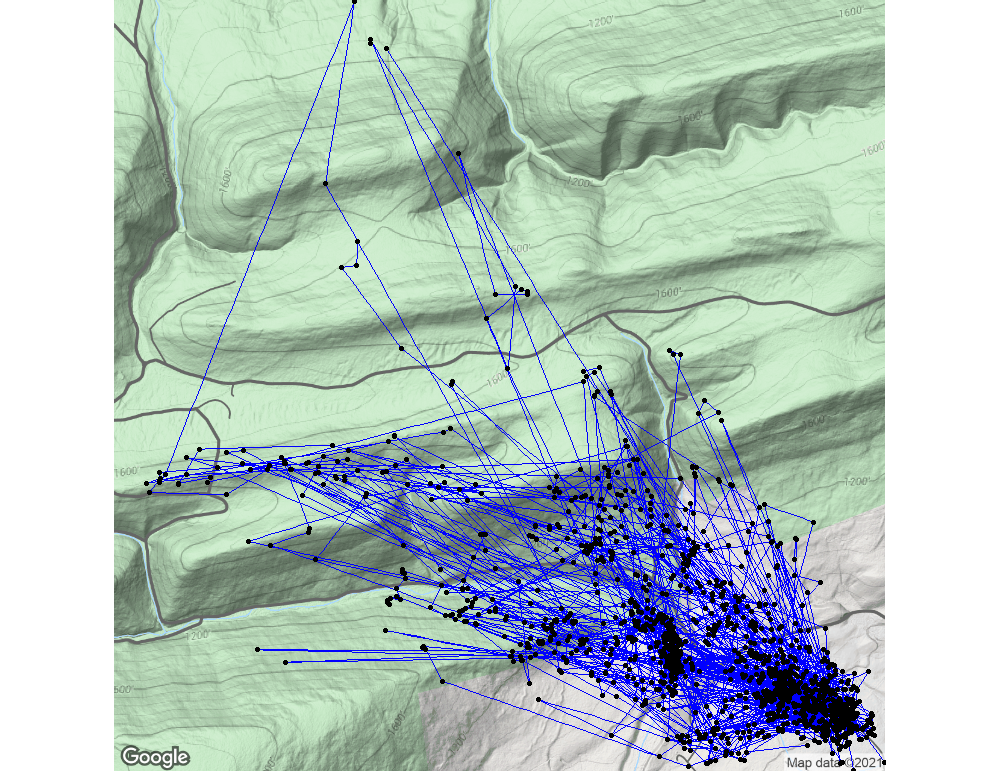
That means your August and September intel is not necessarily going to be helpful in the archery season. However, we know that most breeding is completed by Thanksgiving so come rifle season that buck is more likely to be back in his core home range.
Bottom line: bucks that show up on your camera in July-September means you are near their core area. Bucks that appear during the rut could be from almost anywhere!
-Duane Diefenbach
